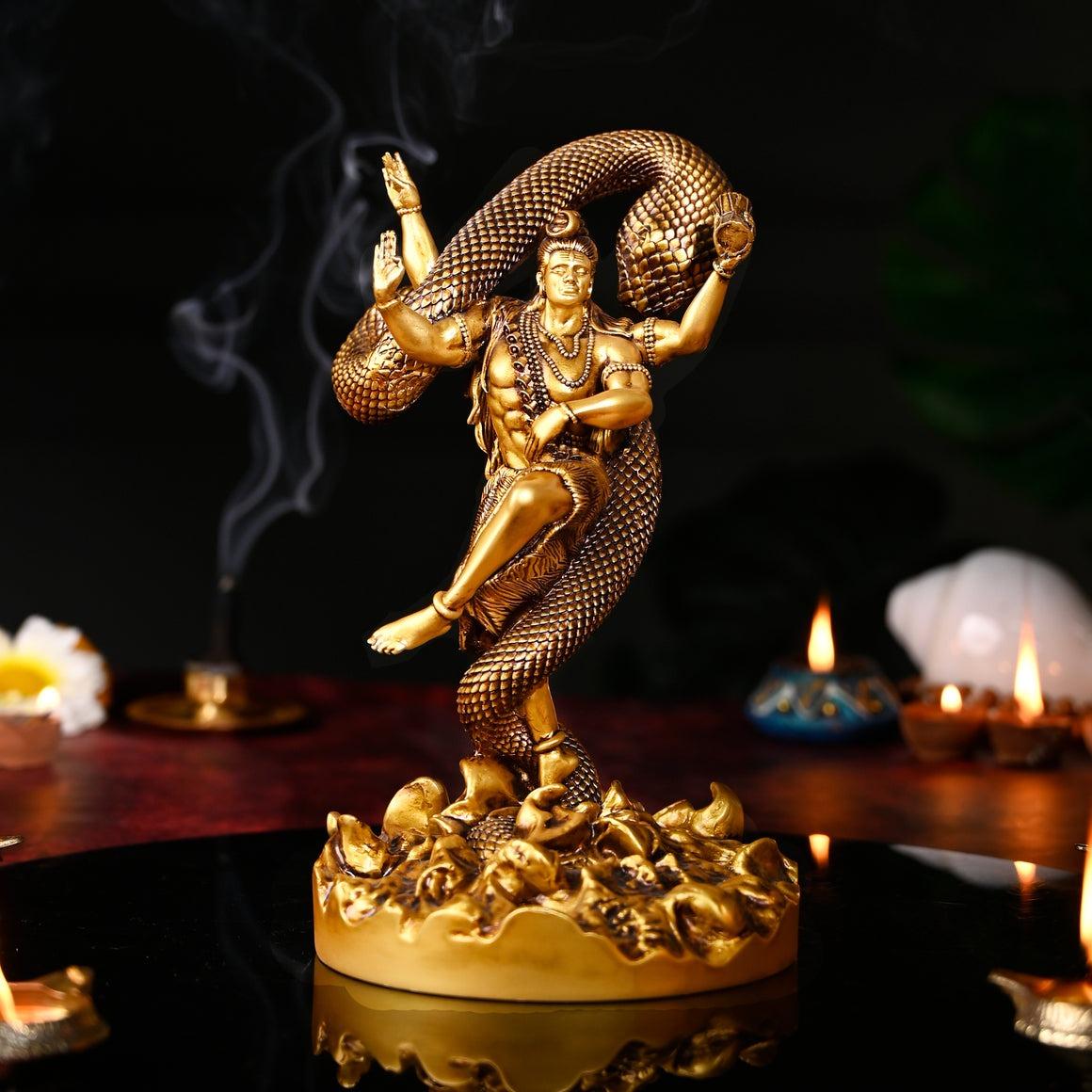Introduction
Lord Shiva, one of the principal deities in Hinduism, is a symbol of ultimate reality and transformation. Often referred to as the “Destroyer” in the Holy Trinity, which also includes Brahma the Creator and Vishnu the Preserver, Shiva represents the cycle of creation, preservation, and destruction. Statues of Lord Shiva are deeply revered in Hindu culture and are seen as embodiments of divine energy. These statues, whether grand or modest, placed in homes or temples, hold profound spiritual significance.
Physical Attributes of Shiva Statues
A typical statue of Lord Shiva is rich in symbolism, each feature conveying a different aspect of the deity’s personality and cosmic function. He is often depicted with:
- Third Eye (Trinetra): The third eye on Shiva’s forehead represents his ability to see beyond the apparent and his deep perception of reality. It symbolizes wisdom and the power to destroy evil and ignorance.
- Matted Hair (Jata): His long, matted hair symbolizes his control over the
 Businesflow of time and the Ganges river. According to mythology, the lord shiva statue descended from the heavens and was tamed by Shiva, allowing it to flow gently on earth.
Businesflow of time and the Ganges river. According to mythology, the lord shiva statue descended from the heavens and was tamed by Shiva, allowing it to flow gently on earth. - Crescent Moon: The crescent moon on his head represents the cycle of time, highlighting Shiva’s connection to time and change. It also symbolizes his mastery over the cosmos.
- Snake Around Neck (Vasuki): The serpent coiled around Shiva’s neck symbolizes his control over life and death. Snakes, which shed their skin, represent renewal and transformation, a fitting metaphor for Shiva’s role as the Destroyer and Regenerator.
- Tiger Skin: Shiva is often shown sitting on a tiger skin, signifying his victory over desire and the animalistic tendencies of human nature. The tiger is a symbol of power, and sitting on it indicates Shiva’s mastery over all forms of energy.
- Damru and Trishul: Shiva is usually depicted holding a trishul (trident) and a damru (a small drum). The trishul represents the three fundamental forces of creation, preservation, and destruction, while the damru is believed to have produced the sound of the universe, symbolizing the origin of the cosmos.
- Rudraksha Beads: Worn around his neck, Rudraksha beads are sacred and are believed to have emerged from Shiva’s tears. They represent deep meditation and spiritual devotion.
Symbolic Significance
Lord Shiva’s statue is not just a representation of the physical form of the deity but also an encapsulation of profound spiritual ideas.
- The Nataraja Form: One of the most famous representations of Shiva is as Nataraja, the cosmic dancer. In this form, Shiva is depicted performing the Tandava, a vigorous dance that represents the cosmic cycles of creation and destruction. The Nataraja statue is a powerful symbol of the rhythm of the universe and the destruction of ignorance.
- Shiva Linga: Another significant representation of Shiva is the Shiva Linga, an abstract form that symbolizes the energy and potential of the divine. The Linga is often interpreted as a phallic symbol, representing the generative power of the universe. However, it is also seen as a symbol of formlessness, reflecting the transcendental nature of Shiva.
- Meditative Shiva: Statues of Shiva in deep meditation are a common sight in temples and homes. This form represents peace, inner strength, and the pursuit of spiritual knowledge. It encourages devotees to look within, to meditate, and to find their own connection with the divine.
Cultural and Religious Importance
In Hindu households, a statue of Lord Shiva is not just a decorative item but a sacred object that is often worshipped daily. It serves as a focal point for prayers and rituals, helping devotees connect with Shiva’s divine energy. The statue acts as a conduit for spiritual communication, with devotees believing that through sincere worship, they can attain blessings, protection, and spiritual growth.
The presence of a Shiva statue in a home or temple also signifies the destruction of negative energies and the purification of the space. It is believed that Lord Shiva’s presence can ward off evil and bring peace, prosperity, and harmony. This belief is particularly strong in the case of the Shiva Linga, which is considered one of the most powerful representations of divine energy.
Artistic Value
Apart from its religious significance, the statue of Lord Shiva holds great artistic value. Sculptors, especially in India, have been crafting intricate statues of Shiva for centuries, using materials such as stone, bronze, and wood. These statues vary in size, from small handheld idols to enormous temple sculptures.
The art of sculpting Shiva statues is a revered tradition, with techniques and styles passed down through generations. Each region in India has its own distinct style, with the Chola bronzes of Tamil Nadu and the stone carvings of Khajuraho being particularly famous. These statues are not just religious artifacts but also masterpieces of craftsmanship, reflecting the deep artistic heritage of India.
Conclusion
The statue of Lord Shiva is much more than a mere physical representation of a deity. It is a symbol of profound spiritual truths, a focus for religious devotion, and a piece of art that reflects the rich cultural heritage of Hinduism. Whether depicted in his tranquil, meditative form, his dynamic Nataraja pose, or as the abstract lord shiva statue each representation of Shiva offers a unique insight into the nature of the divine and the universe. For devotees, the statue of Lord Shiva is a reminder of the eternal cycle of creation and destruction, a source of spiritual strength, and a conduit to the divine.



